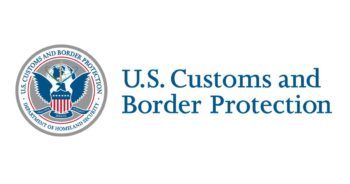Most trade compliance professionals are aware of CBP’s ruling program, but many are not sure when it is appropriate to seek a customs ruling, exactly how to go about obtaining a customs ruling, and what types of issues are covered under the ruling program. A general principle under customs laws and regulations is that an importer is allowed to self-determine most customs related determinations provided they meet the reasonable care standard when doing so. Exactly what constitutes reasonable care is likely the subject of a separate article; however it generally means that an importer has conducted the legally required diligence in making a customs determination. This includes ascertaining all relevant facts associated with the merchandise, the circumstances associated with the importation, and either possessing knowledge of all the relevant customs laws and regulations applicable to the importation or otherwise seeking assistance from a qualified expert who possesses such knowledge.
If a specific determination can be made after exercising reasonable care, a formal ruling is not legally required. However, sometimes even after consideration of all relevant facts and the application of customs laws and regulations, a single determination cannot be reasonably made, and at this point an importer should seek s customs ruling. Consistent with this, a common trait of highly compliant importers includes obtaining customs rulings up front, as they provide certainty in customs transitions, assure uniformity of treatment by CBP no matter what customs port is utilized, and provide a strong indication that the company is exercising reasonable care in its import transactions.
CBP’s ruling program provides a binding determination related to the treatment of goods or conveyances when imported into the U.S. Further, rulings cover only specific, actual products that are to be imported, since a ruling request cannot be hypothetical in nature. Also, it is important to understand that a ruling is binding only between the importer who requested the ruling and CBP. Quite often importers base their customs determinations on comparisons with previous rulings issued and published by CBP. CBP publishes all its ruling determinations on its Customs Rulings Online Search System (CROSS). While reviewing previous rulings for guidance is a sound practice, and is evidence of the exercising of reasonable care, a determination in a previous ruling would not be legally binding on CBP with respect to a third party.
Any person or business that plans to import a particular product into the United States may request a binding ruling from CBP, and there is no fee associated with submitting a ruling request. However, it is important to note that CBP’s ruling program applies to prospective importations only. If the goods that are the subject of the importer’s ruling request have already arrived at a U.S. port, or otherwise were imported in the past, and the importer seeks a decision from CBP Headquarters as to how CBP should properly treat the merchandise, the importer may request “internal advice” or submit a formal protest.
The most common area where importers seek customs rulings is in the area of tariff classification, however CBP also issues rulings on valuation, country of origin, country of origin marking, preferential trade agreement and trade programs, restricted merchandise, intellectual property rights infringement, drawback, temporary importation under bond, and several others.
All ruling requests must be made in writing to the CBP’s Office of Regulations and Rulings. An importer can submit either an electronic request through CBP’s eRulings program or may file a request via a letter. Use of the eRulings process is straightforward and CBP provides a template online for use with the eRulings submittal process that indicates all the information that is necessary for CBP to make its ruling determination. In most cases an applicant can obtain a determination within 30 days, however some delay may occur if a laboratory report or consultation with another agency is required, or if the submittal requires referral to customs Headquarters.
Many importers hesitate to obtain a customs ruling as they view this as surrendering control over their ability to self-determine, or they are fearful of CBP rendering a determination that would have negative consequences, e.g., a classification determination that results in a higher duty rate than a competing preferred HTS provision. These are reasonable concerns, however it is important to note that CBP does not base its ruling decisions solely on its own determinations, but rather the ruling process provides an opportunity for the importer to advocate for a preferred outcome. This might include identifying relevant customs rules and regulations, presentation of the specific facts and circumstances in a manner that most clearly tracks the applicable rules and regulations, and identifying relevant previous CBP rulings that support a preferred determination.
In conclusion, an importer should carefully consider whether or not to seek a customs ruling depending on the particular circumstances, however seeking a ruling is a clear indication of the exercising of reasonable care and provides certainty regarding the import transaction. Also, an importer should take great care when preparing a customs ruling and should utilize the process to the maximum extent to advocate for the desired outcome. To this end importers should make sure they have highly qualified in-house personnel or alternatively utilize an experienced trade consultant or trade attorney to assist in the preparation and submittal of its customs ruling requests to assure the best possible outcome.
By: Paul Fudacz, Senior Attorney























